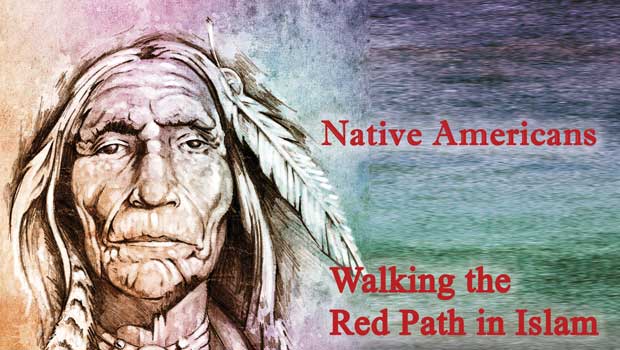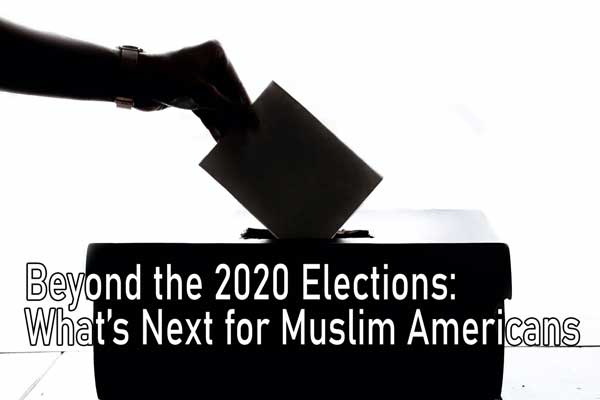Anthropologists and archaeologists are generally unified in their view that Native Americans (Red Indians) were the original inhabitants of the Western hemisphere. The ancestors of modern-day Native Americans are uniformly heralded as the “First Americans,” whether the hypothesis is that migrants arrived in the Americas when the South American and African continents were physically joined, or that a mass migration came from eastern Asia across the Bering Straits to the southern-most regions of South America. Evidence of Islam among Native Americans during the pre-Columbian period is mostly sketchy as there is relatively little research on the subject. Notable exceptions are the works of a few individuals including Shaykh Abdullah Hakim Quick, Dr. Jerald Dirks, and Kambiz Ghanea Bassiri. Further historical documentation of indigenous people embracing Islam through their interaction with Muslim Malian explorers in the Americas in the early 1300s, as well as the Natives’ synergy with runaway Muslim African slaves in the United States, holds the promise of validating and building upon preliminary research in this recent field of study. While there is abundant historical research about the relationships between Europeans and Native Americans, and Europeans and Africans in America, definitive works about the relationships between Native Americans and Africans in America, from the 15th to the 19th centuries, have yet to be written. Dr. Carter G. Woodson, heralded as the “Father of Black History,” in 1920 referred to the absence of research in this area as, “…one of the longest unwritten chapters in the history of the United States.”
The interaction of Natives and Africans in America is exemplified by a number of well-known historical figures. Crispus Attucks is recognized as the first martyr of the American Revolution. He was fatally shot by British troops during a street fight between American colonists and British soldiers in 1770. Tensions ran high due to the heavy taxes imposed by Britain. The incident became known as the Boston Massacre. Attucks was a Black Natick (Nantucket) Indian. Similarly, the father of the Back to Africa Movement, Paul Cuffee, was of Black and Indian (Dartmouth) parentage. He was a successful shipowner in Massachusetts, and in 1815 he transported and resettled in Sierra Leone 38 Black freedmen and former enslaved Blacks. Another example, one of the most notable and effective abolitionists of the mid-19th century, was Frederick Douglas, also of mixed Native American and African American ancestry. Following two previous failed attempts at freedom, Douglas escaped from a Baltimore plantation to New York, eventually settling in Massachusetts where he became known as a brilliant orator, author, and compelling abolitionist voice.
Attucks, Cuffee, and Douglas are only three examples of prominent, major figures in American history who were of Black and Native American heritage. The European-American genocide against Native Americans and the trans-Atlantic trade of enslaved Africans created the political and social crucible in which the two cultures converged, cross fertilized, and developed varying degrees of mutual dependence and cooperation. Nowhere was this forced interaction more evident than the colonial lands known as La Florida, now the states of Georgia, Alabama, and Florida. Manifest Destiny, the White Supremacist doctrine that drove European-Americans to impose their political sovereignty and expanding geographical boundaries on those they considered inferior, facilitated Native, Black, and Muslim interaction, necessitated by their struggle for survival.
The presence of indigenous (Native American) Muslims in the U.S. is a subject that titillates the imagination. A relatively small number of indigenous people live outside the 326 designated reservations across this country. Native Muslims are only a small percentage of the ever-diminishing indigenous population in the U.S. Nonetheless, their presence and as yet untapped cultural and religious influence on Muslims and non-Muslim Native Americans outweigh their modest numbers. Native Muslims are potentially the conduits to provide much-needed human and financial resources from the Muslim community to Native populations. More importantly, Native Muslims can bring the Islamic call of submission to the One God, Allah, and the following of His last Messenger, Muhammad (peace be upon him), to this indigenous demographic. Too many Americans perceive Native Americans in a stereotypical, often demeaning and inaccurate way. Until a few short decades ago, the entertainment industry, particularly movies and TV westerns, as well as print journalism, depicted Native Americans as either murderous savages or lazy, groveling primitives, unable to cope with civilization’s advances. Such false and dehumanizing images of First Americans were, historically, important tools of White Supremacist ideology, serving to assuage the consciences of American settlers. In later years, American corporations coveted Native American lands for the natural resources and/or oil pipelines access.
Native Americans are neither noble savages or helpless dependents incapable of charting their collective or personal destinies. They are victims of three centuries of structural racism and America’s insatiable lust to control and possess material and human resources within or outside its lawful grasp. In the coming years, the longest unwritten chapter of American history, the interrelatedness of African American and American Indian histories, will finally be disclosed. And it will include the historical Muslim presence and, insha’Allah, the mass return of First Americans to Islam.






